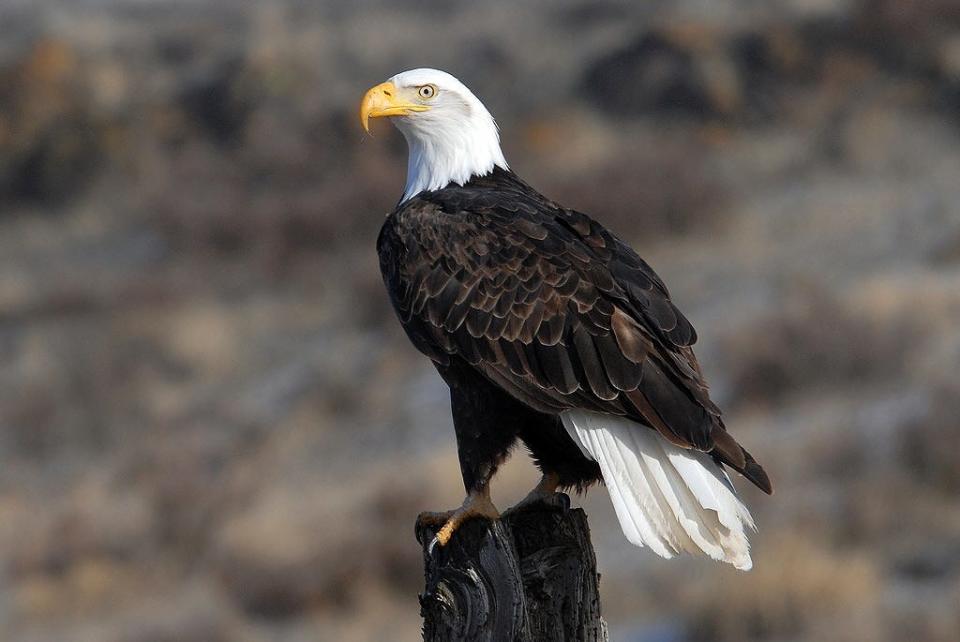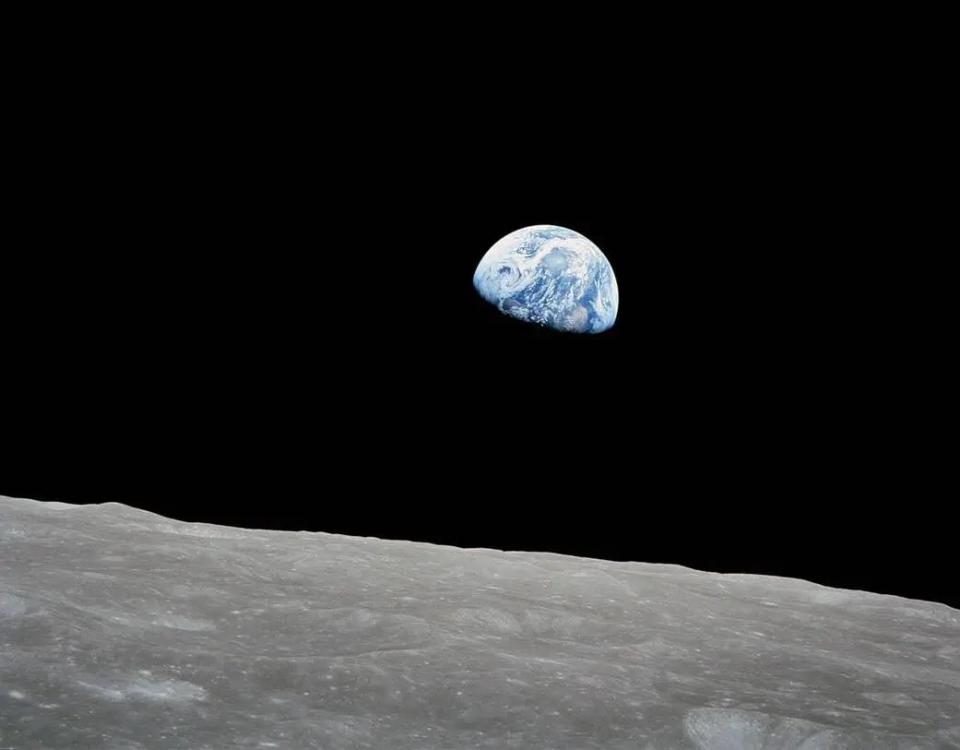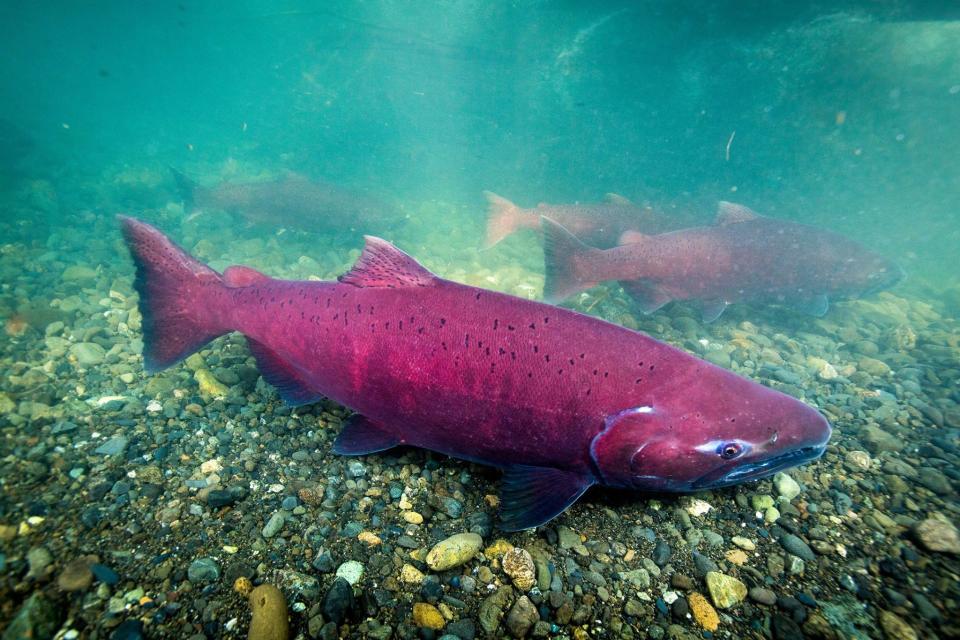50 years ago, Democrats and Republicans agreed to protect endangered species
President Richard M. Nixon enshrined the Endangered Species Act into the nation’s history 50 years ago on Thursday.
Beleaguered by the Watergate scandal, Nixon signed the act unceremoniously, issuing a short statement from the “western White House” in San Clemente, California.
“Nothing is more priceless and more worthy of preservation than the rich array of animal life with which our country has been blessed,” his short statement read, in part.
The Act would enrich the lives of countless future generations, he predicted. “America will be more beautiful in the years ahead, thanks to the measure that I have the pleasure of signing into law today.”
The legislation provided a road map for protecting vanishing species and their habitats. Its 50-year journey has seen speed bumps, detours and a few failures, but though its future remains uncertain, many experts say it remains one of the nation’s crowning achievements.
“The Act reflects our democracy,” said Zygmunt Plater, an environmental law professor at Boston College, whose advocacy has seen the fate of the tiny snail darter fish come full circle over more than 40 years.
On its golden anniversary, many Americans routinely experience joyful encounters with one of the plants or animals considered the Act's success stories. They may see sunlight gleaming off the brilliant white head of one of the more than 300,000 bald eagles now found across the nation or watch one of the protected whales breaching from the ocean waves.

Wildflowers in California, Kirtland’s warblers, peregrine falcons and the Monito gecko on an island in Puerto Rico are among more than five dozen species that have recovered.
Endangered species controversy: Feds want to hunt one kind of owl to save another kind of owl. Here's why.
The bipartisan adoption and signing of the Act 50 years ago was "a moment that stands out in the national environmental consciousness," said Tim Preso, a managing attorney of the biodiversity defense program at Earthjustice. "It would be great to see more of those."
Even as these successes are celebrated, many other plants and animals remain on the brink of extinction or are sliding in the opposite direction, often because of habitat loss and fragmentation.
The act’s “record of accomplishment from these strong rules remains contested,” said Cary Coglianese, a professor of law and political science at the University of Pennsylvania Carey Law School. Many species “remain listed as endangered or threatened.”
The Florida panther, for example, struggles to gain ground and avoid deadly collisions with speeding cars. The lesser prairie chicken narrowly escaped this year when President Joe Biden vetoed a bill that would have stripped the bird of its endangered species protection.
The perils of the changing climate add urgency to calls for increased funding and more protection. In North Carolina, for example, the rising sea steadily creeps over a refuge that’s home to the sole remaining wild red wolf population. Off New England, warming waters forced changes in the foraging habits of the endangered North Atlantic right whale, putting the massive marine mammals in harm's way more often.
Remembering when the Endangered Species Act was adopted
The Act was one of several landmark measures passed during the Nixon years, including the National Environmental Policy Act and the creation of the Environmental Protection Agency. His administration came amid an environmental awakening of the country that had begun years earlier.

“This truly was an environmental revolution that had been building up to this point,” said Clay Henderson, author and retired environmental attorney. Several events contributed, including the publication of Rachel Carson’s "Silent Spring," which riveted the nation’s attention on the perils of pesticides. Momentum grew during the administrations of John F. Kennedy and Lyndon B. Johnson.
Then on Dec. 24, 1968, astronaut William Anders captured the iconic picture of Earth, “rising over the desolate moon,” Henderson said. “It just really captured the imagination of people and there was this moment in time where people thought 'we need to do something'.”

Eight days after Nixon was inaugurated in January 1969, a major oil spill occurred in his home state of California. Weeks after the inauguration, millions turned out across the country to participate in the first Earth Day celebration.
Three years later, the Act passed 355-4 in the House of Representatives and unanimously in the Senate. Among those senators was Biden.
Part of the beauty of the act was the citizen enforcement provisions that allowed citizens to go to court to force the federal government to enforce the law, taking a page from the civil rights movement, Plater said.
The Act "finally recognized that all forms of life have evolved over time, and some only ask to be given room to continue to live and grow by man,” said the late Nathaniel Reed, one of a small group of men convened by the administration to help get Nixon’s environmental measures approved.
“We are Earth’s stewards and the ESA, difficult as it is, recognizes the right to life of plants, mammals, insects, birds, and whales,” Reed said in a 2015 interview.
How many species have been listed as endangered or threatened?
? More than 2,300 are listed as threatened or endangered.
? The list includes 1,252 species endangered in the United States and 417 threatened species.
? It also lists 698 foreign species as threatened or endangered.
? The endangered list includes 766 plant species and 486 animal species.
Successes of the Endangered Species Act
The law has been “incredibly effective,” said Susan Holmes, executive director of the Endangered Species Coalition. "It has been the global gold standard for protecting wildlife and conservation.”
It has remained consistently popular in polls and surveys, with support consistently above 85%, said Holmes and Preso.
That support "speaks to something really fundamental in our relationship with our world and the irrevocable nature of extinction," Preso said.
It "has been extremely successful at preventing extinction and bringing a lot of these species back from the edge, Preso said. "Either they're back from the brink or their populations are more secure."
In addition to saving several species, the act has been “a means of protecting a great amount of habitat," said Henderson, author of "Forces of Nature: A History of Florida Land Conservation."
Plater's work in helping to protect the tiny darter, a brown-banded fish about 3 inches long, saw it listed in 1975. A case he represented to stop a Tennessee Valley Authority dam to protect the fish was the first endangered species case to reach the U.S. Supreme Court. Then in 2019, Plater and Jim Williams, a former U.S. Fish and Wildlife Service biologist, petitioned the service to delist the fish in a move to stop it from being delisted without protections.
The snail darter is a lesson in the need for habitat protection and the complexities that occur with species protection, Plater said. The fish have recovered because they were transplanted into other ponds to ensure their recovery, but that work hasn't been "an unmitigated success."
How many species have been removed from the endangered or threatened species list?
At least 117.
? 64 recovered to the point that they no longer qualified.
? 32 were declared extinct, including the dusky seaside sparrow and the Bachman's warbler.
? 21 were removed for other reasons that meant they no longer met the definition.
Which presidential administration listed the most species?
President Bill Clinton leads for the most species listed and the greatest number of species listed per year on average.
Despite his administration leading the charge, Nixon is at the bottom of the list, with only seven species added after the act was signed. He resigned just seven and a half months after signing the Act.
Total species listed by administration:

? Bill Clinton: 501
? Barack Obama: 334
? Ronald Reagan: 256
? George H. W. Bush: 229
? Jimmy Carter: 116
? George W. Bush: 52
? Gerald Ford: 46
? Joe Biden: 42
? Donald Trump: 22
By political party, when Democrats have been in the White House, an average of 43 species were added to the list each year. When Republicans were in the White House, the average fell to 33 species a year.

Which types of animals are most endangered or threatened?
Fish. At least 169 fish species found in the United States are listed as endangered or threatened.
These are the other animal groups represented, in descending order:
? Mammals: 95
? Insects: 93
? Birds: 91
? Clams: 89
? Snails: 52
? Reptiles: 46
? Amphibians: 43
? Crustaceans: 32
? Arachnids: 11
? Corals: 7
What's next for endangered species protection?
One in 5 plant and animal species in the nation remain at risk of extinction, Holmes said. “Loss of habitat and climate change are absolutely some of the most important threats that we have.”
“We are at what I would say is a pivotal moment with the threats of climate change,” she said. “We have to act faster than ever in order to ensure that these species are going to thrive.”

This article originally appeared on USA TODAY: Endangered Species Act turns 50: Landmark law reaches key anniversary
Solve the daily Crossword

